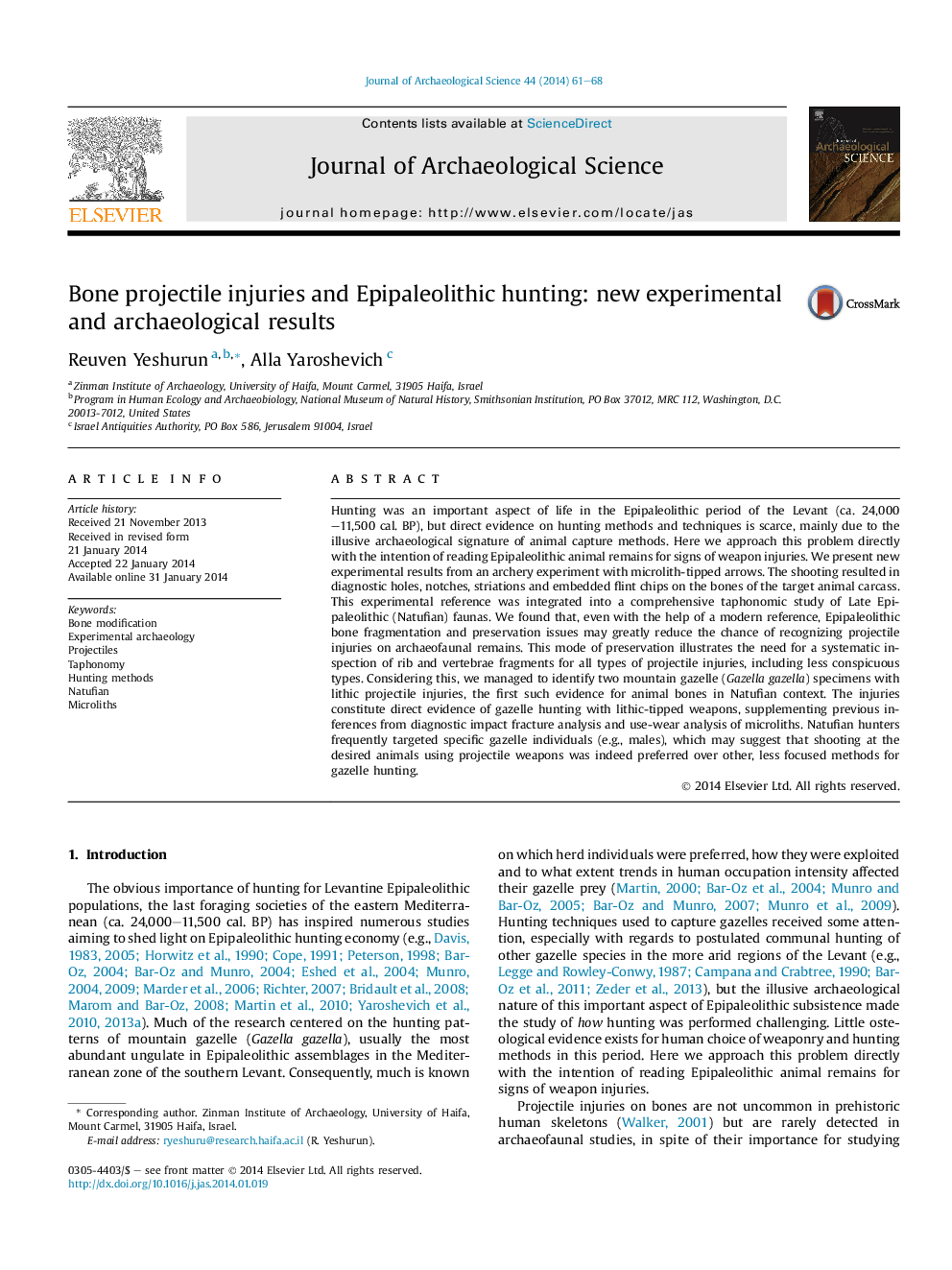| کد مقاله | کد نشریه | سال انتشار | مقاله انگلیسی | نسخه تمام متن |
|---|---|---|---|---|
| 1035379 | 1483916 | 2014 | 8 صفحه PDF | دانلود رایگان |

• Searching animal bones for projectile injuries directly informs of hunting methods.
• Archery experiment yielded diagnostic injuries caused by microlith-tipped arrows.
• We applied this reference to a taphonomic study of Natufian archaeofaunas.
• First identification of projectile injuries in Natufian context, on gazelle bones.
• Supports shooting at specific individuals as the preferred gazelle hunting method.
Hunting was an important aspect of life in the Epipaleolithic period of the Levant (ca. 24,000–11,500 cal. BP), but direct evidence on hunting methods and techniques is scarce, mainly due to the illusive archaeological signature of animal capture methods. Here we approach this problem directly with the intention of reading Epipaleolithic animal remains for signs of weapon injuries. We present new experimental results from an archery experiment with microlith-tipped arrows. The shooting resulted in diagnostic holes, notches, striations and embedded flint chips on the bones of the target animal carcass. This experimental reference was integrated into a comprehensive taphonomic study of Late Epipaleolithic (Natufian) faunas. We found that, even with the help of a modern reference, Epipaleolithic bone fragmentation and preservation issues may greatly reduce the chance of recognizing projectile injuries on archaeofaunal remains. This mode of preservation illustrates the need for a systematic inspection of rib and vertebrae fragments for all types of projectile injuries, including less conspicuous types. Considering this, we managed to identify two mountain gazelle (Gazella gazella) specimens with lithic projectile injuries, the first such evidence for animal bones in Natufian context. The injuries constitute direct evidence of gazelle hunting with lithic-tipped weapons, supplementing previous inferences from diagnostic impact fracture analysis and use-wear analysis of microliths. Natufian hunters frequently targeted specific gazelle individuals (e.g., males), which may suggest that shooting at the desired animals using projectile weapons was indeed preferred over other, less focused methods for gazelle hunting.
Journal: Journal of Archaeological Science - Volume 44, April 2014, Pages 61–68